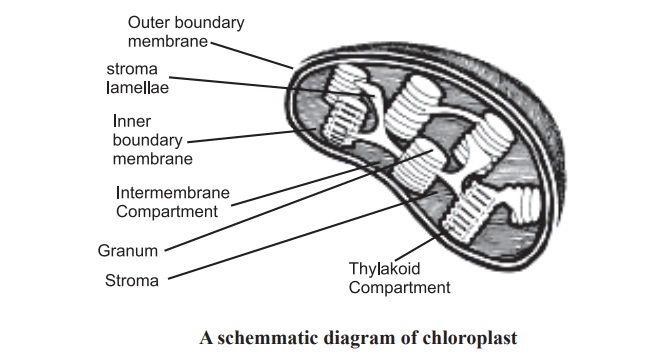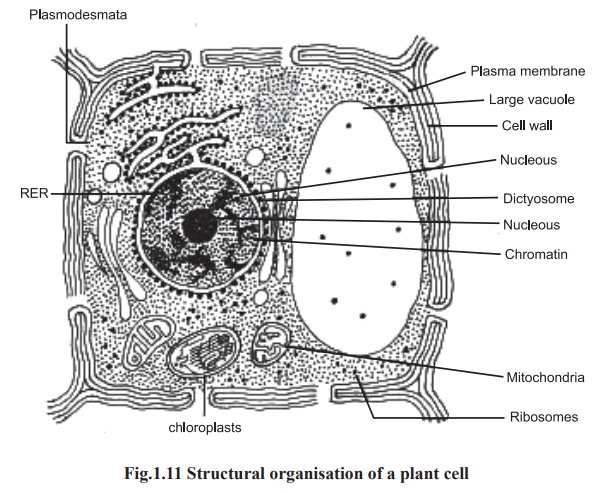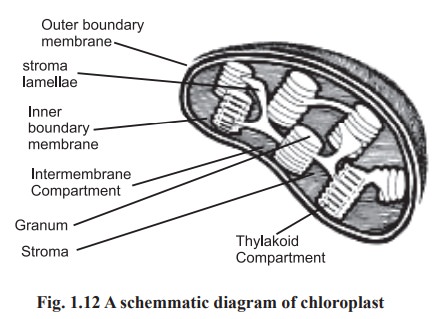Chapter: Biochemistry: Living Cell
Chloroplasts and its Functions

Plant
Cells
Plant cells have cell wall made up of cellulose
and the cytoplasm consists of big vacuoles and chloroplasts (Fig.1.11).

Chloroplasts
The ability to use light as a source of energy
for sugar synthesis from water and carbon dioxide is a special feature of
certain plant cells. This process, termed photosynthesis is carried out in
organelles called chloroplasts. These organelles are commonly ellipsoidal
structures bounded by an outer membrane but also containing a number of
internal membranes. Internally, the chloroplast consists of a series of
membranes arranged in parallel sheets called lamellae and supported in a
homogeneous matrix called the stroma. The membranes are arranged as thin sacs
called thylakoids that contain chlorophyll and may be stacked on top of one
another, forming structures called grana. Lamellar membranes connecting the
grana are called stroma lamellae (Fig.1.12).

Related Topics